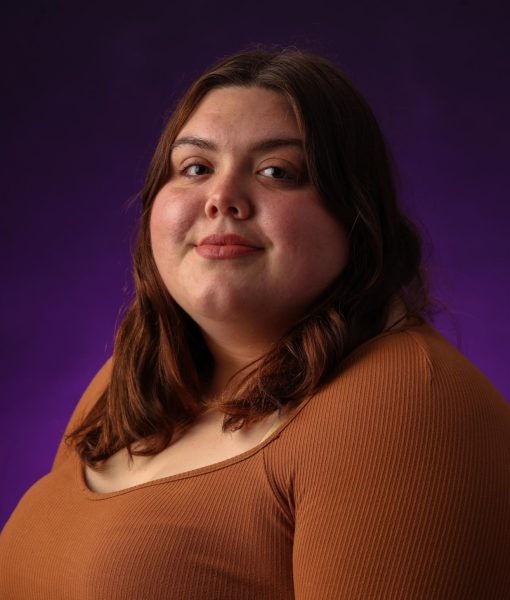Bryce Harris sits at San Francisco State’s J. Paul Leonard Library sketching his raw thoughts down on his iPad. Students pass by and glance down at the intricate design and pause to compliment the young artist.
Harris is a senior apparel and design major at San Francisco State University who upcycles clothing and uses recycled materials for his clothing and artwork. He is crafting his brand through instagram, @vilecreatures.
Last semester, Harris was a part of an independent study where he used recycled clothing from Goodwill to create something new and sustainable. According to him, his clothes and artwork reflect his inner demons. His recycled fashion is created out of second hand clothing found at thrift stores and warehouses in SF. The young designer enjoys recreating pants and vests;, and his favorite material is denim.
The environment has had an impact on him for a long time. Harris hates fast fashion and “despises” the industry.
“Harris chose apparel and design because there were aspects of engineering and science that he liked, along with the creative and artistic thinking. According to Harris, in his high school years, he never cared about what he wore, but he won his high school’s ‘best dressed’ superlative twice.
Early Inspirations
Harris has jumped around many different jobs. From being a stable attendant, to working in food service, he’s done it all. His brain doesn’t allow him to stay in one place for very long, but his mellow vibe follows him in whatever he is doing.
“I knew I could not survive in a fucking cubicle,” Harris said. “I just knew I couldn’t live a mundane life.”
“I’m never going to get the life I want working for another person,” Harris said. “That’s kinda the illusion that’s set up in this country.”
In high school, Harris and his friend Drake Fish would hang out in Harris’ garage, talking and drawing. They bonded over their shared passion for fashion. Fish said they would discuss artistic ideas, and there wasn’t any pressure.
“Him and I were doing a lot of clothing together, because we both made clothes,” Fish said. “But his speciality was more picking up items that he really liked that were unique from the thrift store.”
Fish recalls never seeing Harris buy something that was brand new to use to paint on. Fish likes that Harris has amazing energy, describing him as really easy to be around.
“As an artist he’s always taken the hard route to coming up with original ideas rather than just copying other people or taking inspiration from other artists,” Fish said. “He really tries to channel his original creativity, and all of his artwork is a direct representation of what’s going on inside of his head.”
Harris is inspired by his mother, Gigi Harris – who grew up in Texas – and stated there are a lot of Western themes in his clothing. His mother described him as a multitalented, sensitive, intuitive, intelligent, creative individual.
Harris’ mother is an interior designer; which had a lot of effect on Harris’ future artistic endeavors.
“As a child he would take an interest in my work,” Harris’ mother recalled. “I remember him coming with me to show rooms and he would just light up. He was very much into furniture and style.”
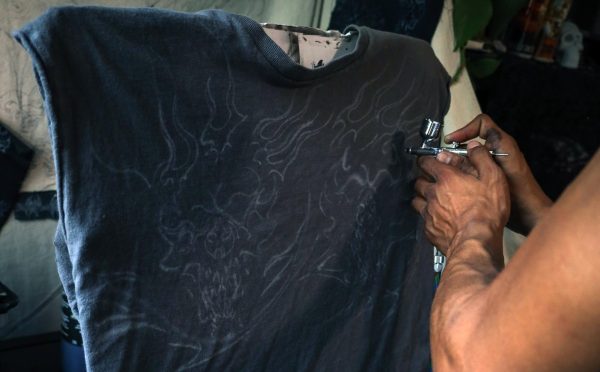
Recycled Study
The environment has been a constant in Harris’ life and so has art. Last semester, Harris applied for an independent study taught by Dr. Nancy Martin, a professor at S.F. State. As mentioned in an article about the Goodwill independent study, Harris created a denim vest and upcycled a pair of denim jeans.
“It was really cool just to kinda have that opportunity,” Harris said. “It’s really important for me to see sustainable models on a large scale because they’re going to be the ones that are mostly dealing with sellers and designers.”
Dr. Martin chose the first six students that applied for the independent study. In her curriculum, she strives to teach students about making sustainable clothing.
Harris was taken to the processing center in South S.F. and experienced how Goodwill employees organize the donated clothing in bins.
During the independent study, Harris and his team were inspired by 60s and 70s festival garments. Harris listens to a lot of old school rock and roll, which inspires him in his fashion.
“It was a really big project, one of my first ‘professional’ projects that was displayed in the store,” Harris said. “It was just a really cool full circle moment because I used to live on Haight Street.”
Epiphany Moment
Harris moved to San Francisco because he believes the city is unique to everyone. According to Harris, the people are a lot less judgmental, in contrast to the conservative values of his hometown. Harris grew up in Long Beach, Calif. and moved to San Diego when he was 12.
During the pandemic, Harris had an epiphany moment, which transformed him into the artistic and creative person he is today. He was done living other people’s dreams.
Harris’ parents are heavily involved in their son’s life, as he sends them pictures of new creations. Lee Harris, Bryce’s father, said that Harris shares his artwork with his father weekly.
“Bryce has always been a very bright light, and he has a way of attracting opportunities, and things have come very easy to him,” Harris’ father said.
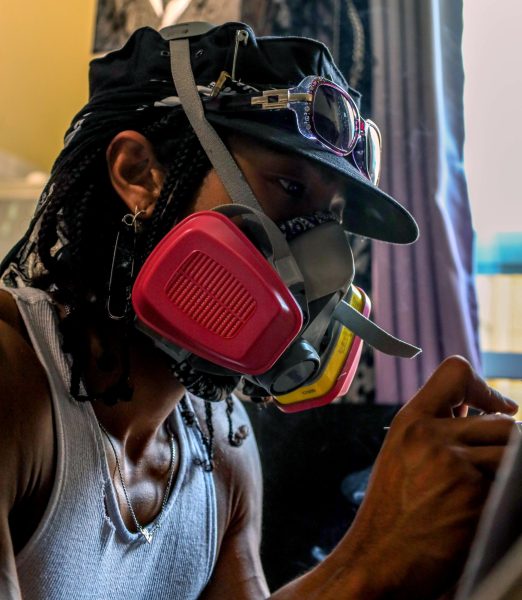
Vile Creatures
“I’m always going to have my art page [Vile Creatures] as my thing,” Harris said. “It’s not a brand to me.”
All Harris wants in regards to his clothing is for people to enjoy it, not see it as a typical brand to which he equates luxury with. He doesn’t enjoy the illusion of elitism that comes with having a “brand.”
“This can be kinda a shallow industry, but I think working second hand, integrating my art into my clothing has made it so it’s very fulfilling for me,” Harris said. “It’s not just about things that look good.”
Harris describes his style as “outside of any box” and “adaptable.” According to him, everything in his closet is interchangeable.
“I think it’s very natural, all my tendencies tend to be towards animal prints or flowers or florals,” Harris said in regards to describing his style. “What you find can all go together and compliment each other really well.”
Harris is currently in his fourth year at state, and he hopes to graduate in the Spring. But right now he is considering adding on another major – merchandising. Right now Harris is an apparel design major with an internist in garment making. The merchandising degree will teach him the skills he would need to run his own clothing brand and manage the business part of selling his artwork.
Harris’ artistic process is constantly changing. For the past three to four years, he’s been diving in with no preplanned ideas. Harris airbrushes a lot of his clothing as his main artistic medium.
Now, Harris is “starting to look at the masters” by changing his artistic process and incorporating more planning.
“I kinda put my blinders on for two years and just honed in on having good fundamentals and realizing what I liked to draw,” Harris said. “Now I’m at a point where I’m refining it, I’m learning to paint like masters now.”
Harris is mainly inspired by H.R Gigier, who did the artwork for the “Aliens” franchise, and Ed Roth, who is a cartoonist and American artist.
The Fast Fashion Goliath
“My artwork definitely uplifts the frequency of the environment,” Harris said. “I think I give a lot of people hope by seeing my progress and seeing my journey. I inspire a lot of people to start working on their own things.”
When asked how he feels about fast fashion, Harris spoke the loudest he had in the interview. “I despise it!” Harris said, then continued to explain that he doesn’t understand it and thinks “it is so lucrative on every scale.”
“I do everything I can in my decisions to make sure my art is as guilt free as I can make it,” Harris said in regards to how his artwork affects the environment. “It is a hard thing because clothing is inherently consumer based.”
When painting, Harris doesn’t buy canvases anymore. Instead all of his materials are second hand and recycled. Instead of using a canvas, Harris will bleach denim, find a recycled canvas or paint on an old tarp.
Zac Jones, a friend of Harris’, loves what Harris is doing with his artwork. Jones and Harris would hang out to smoke and draw together in their free time. Jones describes Harris as “one of the realest people you’ll ever meet.”
“It’s sick. I mean, he pretty much just takes the crap that he has and turns it into sick-ass shit,” Jones said.
In order to find his materials, Harris goes to Goodwill, SCRAP SF, a warehouse, or even just stuff he finds on the street.
“It carries a different weight, it carries a different energy when you put more of yourself and more of your care into your art,” said Harris.



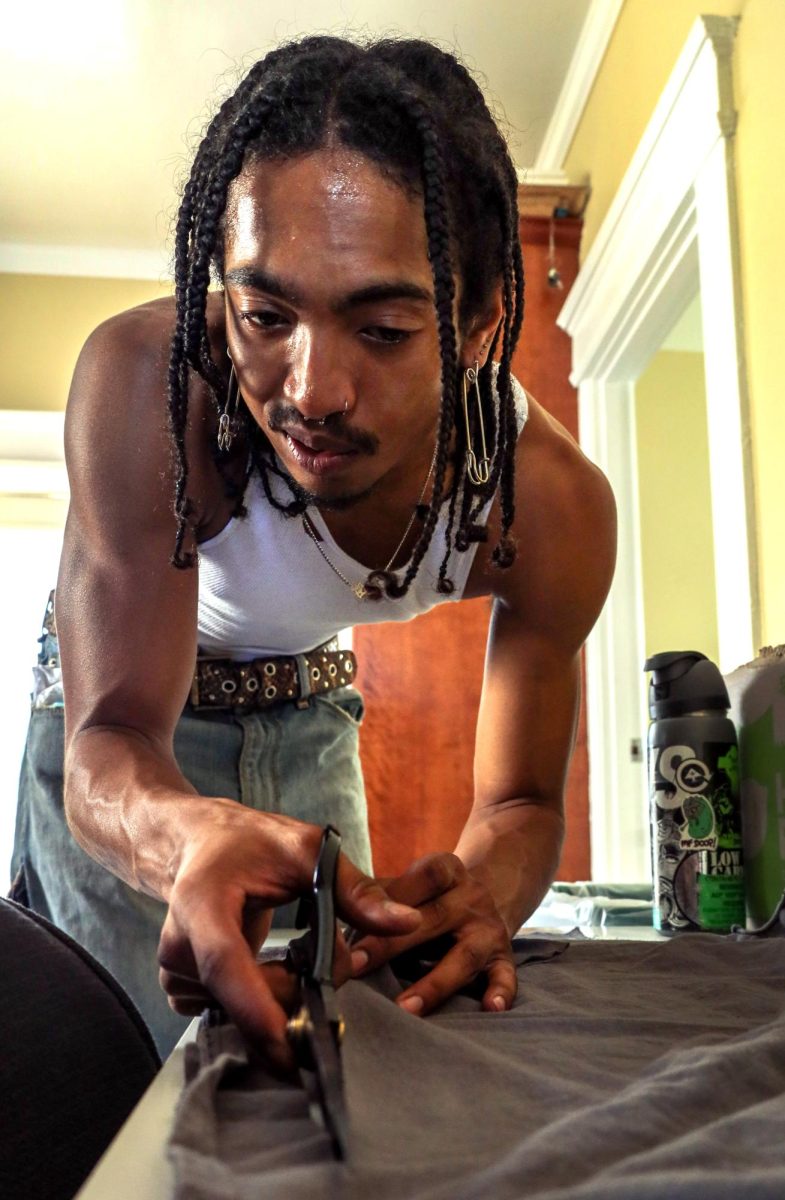
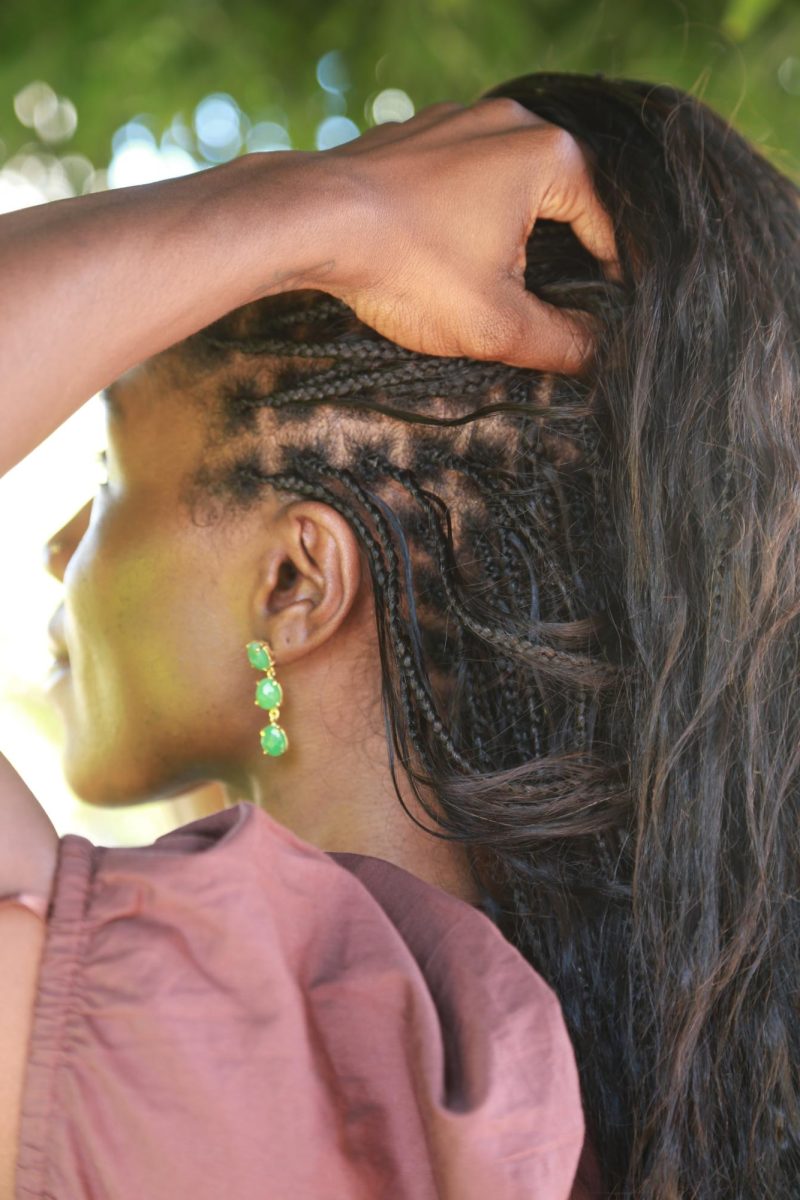
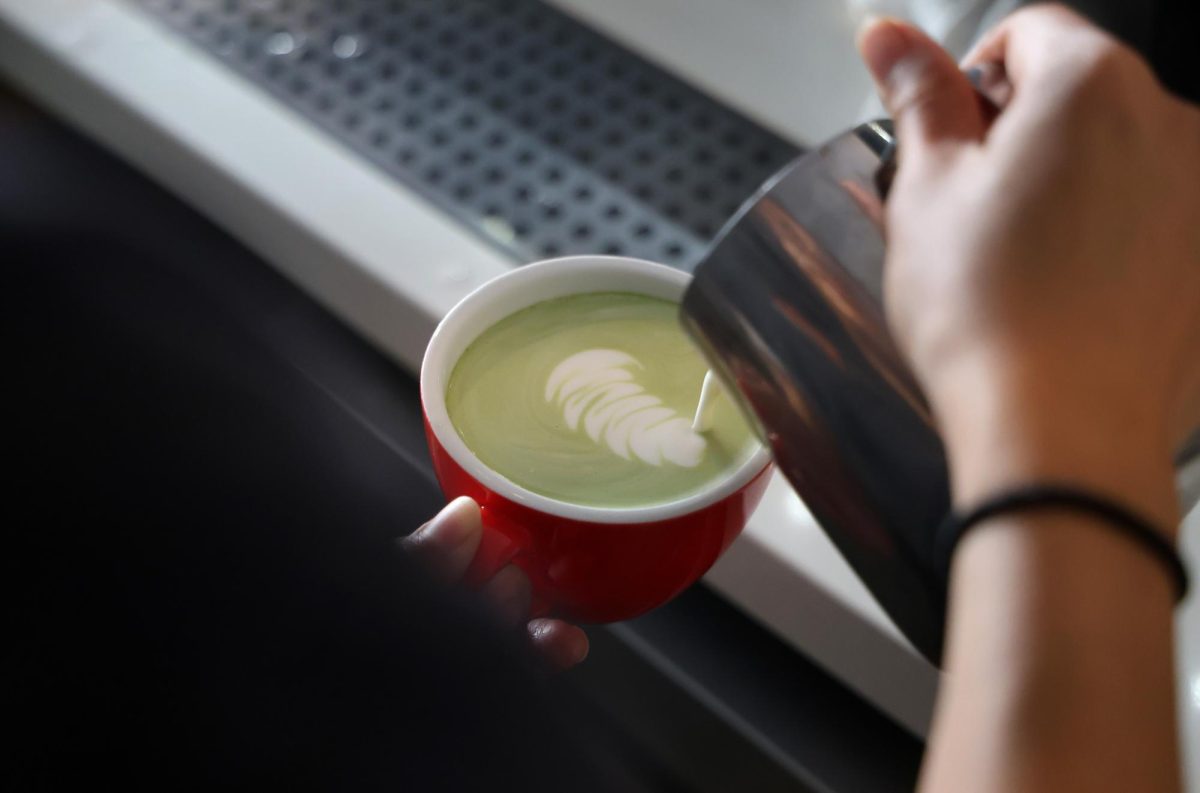
![[Video] No Trump, No Feds, No MAGA; San Francisco says "No Kings!"](https://xpressmagazine.org/wp-content/uploads/2025/10/Screenshot-2025-10-28-165913-1200x675.png)
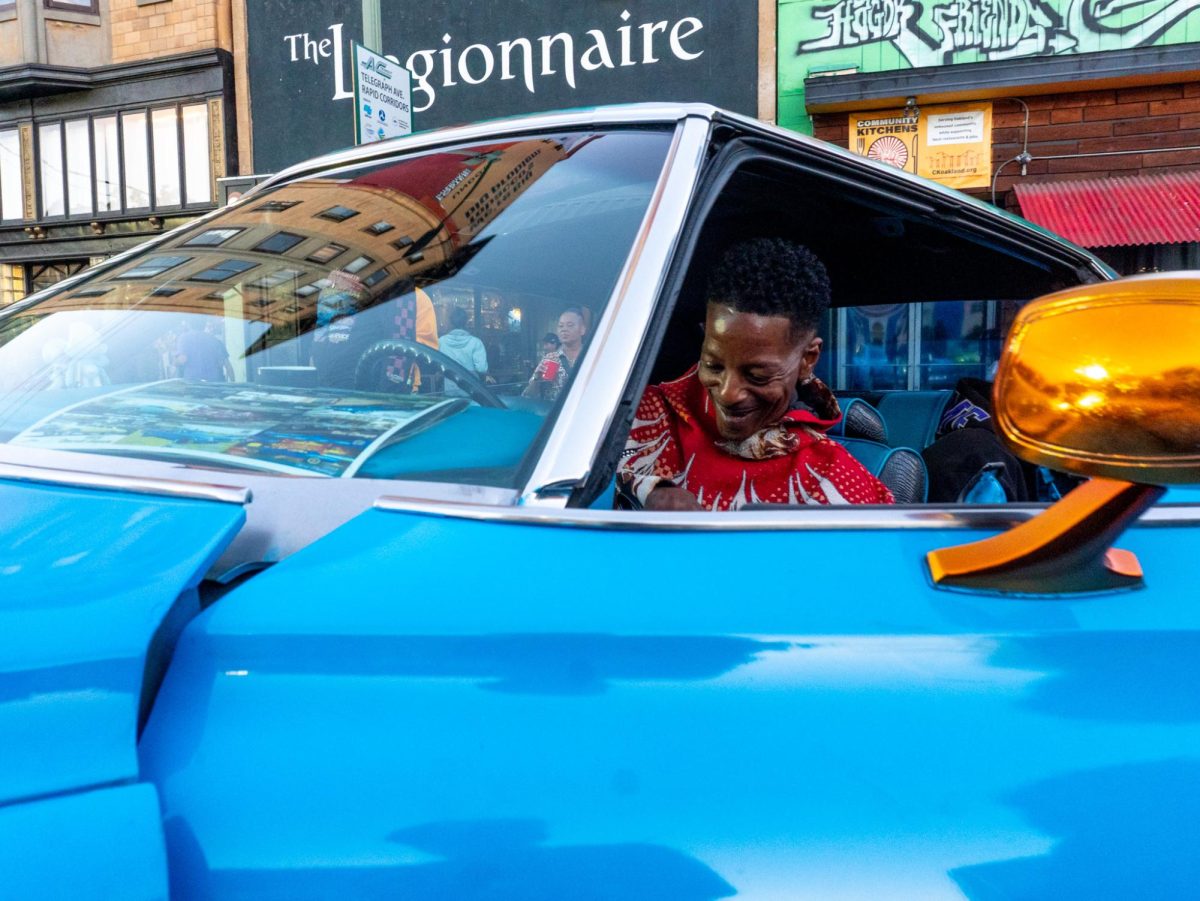
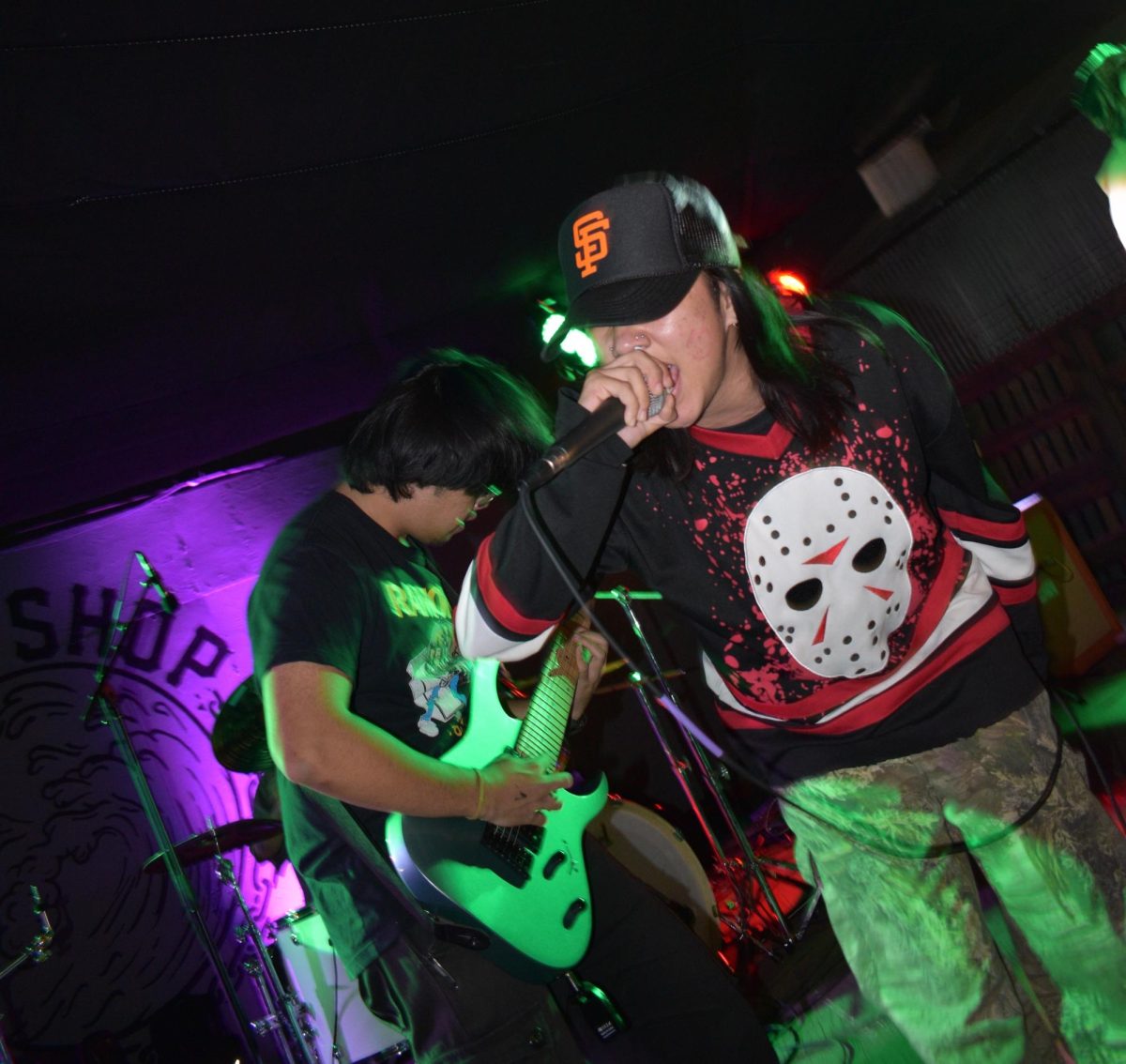
![[Video] Gators Give Heartfelt Donations to Blood Drive](https://xpressmagazine.org/wp-content/uploads/2025/10/bloodstill2-1-1200x675.png)
